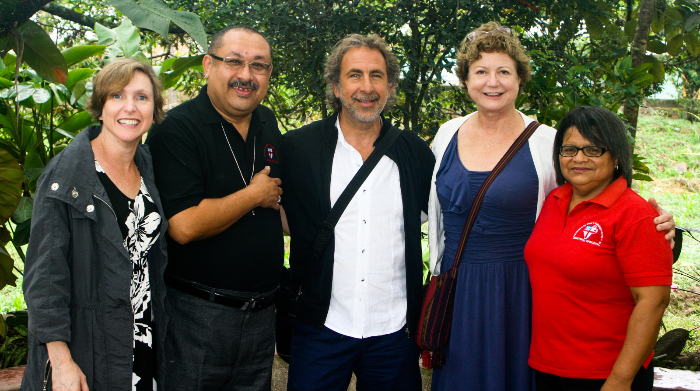July 8 – 11 we traveled with board member Jay Lalezari, a physician and HIV researcher, and volunteer Rebecca Auster to see HIV+ patients and meet with USAID staff. Dr. Clarisa Castro, Director, Public Health and Medical Affairs, Gilead Sciences, joined us for one of the days.
The first clinic we visit is in the hilly, green city of Siguatepeque; the second is in the larger, northern city of San Pedro Sula. Beginning at 8AM, Denise and Jay begin consultations with HIV-positive patients. Some of them are infected with medication-resistant strains of HIV while others are failing treatment due to malnutrition. Twelve patients are prescribed rescue regimens brought in from the U.S. These potent drugs are not available in Honduras. For some, this is their last hope for surviving HIV.
At the Siguatepeque clinic, Pascual Torres, Executive Director of Siempre Unidos Honduras, forms a circle with the patients whom he asks to introduce themselves and to name their places of work. Aida (all patient names are pseudonyms), a 41 year-old woman in a neat, yellow polo shirt with her company’s logo cries as she describes losing her first job after five years of employment when she told her boss her HIV status. Juan, married with 4 children and 48 years old says, “I know how to work in a lot of jobs.” Because prospective employers often require HIV testing, he cannot find employment. Pascual observes that the work-related discrimination is “taking away the right to live. Juan could die not due to HIV but because he cannot make a living.”
The conversation turns to the quality of care at Siempre Unidos. Catalina says, “This is the best place. There’s a good doctor. We receive more humane treatment and better medication than at other clinics.” She continues, “People ask about your health if you show up too thin.” Catalina feels she is too skinny. Others disagree; Pascual says she looks the same. Catalina says her legs are ugly and she hides them under pants or long skirts. She begins to cry.
Another patient pats her shoulder and says, “This has to do with your self-esteem. You have to value what’s inside.”
We heard these stories and many more about stigma, fear of death, incessant taunting by neighbors, and loneliness. We also heard of great bravery in the face of dire illness. As Luisa said when her husband died 18 years ago: “I was told I would die after 15 days and I said, no, I am not going to die.”




Leave a Comment